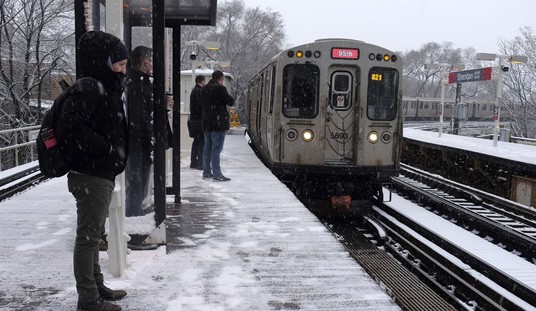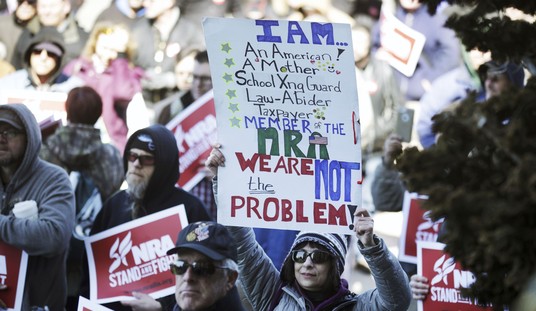In a stunning in-depth report from NBC News, the two gunfights that resulted in the apprehension of the Boston Marathon bombers is heavily criticized for exceedingly poor command and control and reckless gunfire.
The report, entitled Too Many Guns: How Shootout With Bombing Suspects Spiraled into Chaos, shows that the initial shootout in which Tamerlan Tsarnaev was eventually killed was almost a circular firing squad, as on-duty and off-duty officers, some in uniform and some in street clothes, arrived on the scene from multiple directions and began shooting no only at the Tsarnaev brothers, but each other:
In effect, the suspects ended up at the center of a ring of cops on Laurel Street between Dexter and School streets during the 20-minute firefight, and the bullets that were fired at them often hit near the officers on the other side.
“Certainly not a good idea,” said Davis. “They see somebody shooting, so they fire at them. That’s their training.”
…More than a dozen officers suffered minor injuries during the mayhem, but none was believed to have been wounded by the suspects. The only serious wound was suffered by Richard Donohue, a transit cop with the Massachusetts Bay Transportation Authority, who was hit in the groin by a police bullet and began to bleed profusely.
The exact number of bullets fired y the Tsarnaev’s—who had just one handgun—may have totaled less than ten rounds. The responding police fired at least 100 rounds that authorities admit during this shootout, but the reality is that a much higher number of shots fired is probable.
Presuming that Boston-area officers that participated in the shootout were likely armed with .40 S&W Glock 22s or similar handguns featuring 15-round magazines and one round in the chamber, and that officers typically carry at least two spare magazines, each officer was carrying 46 rounds of ammunition. Many officers expended most or all of their ammunition during the shootout, and there were a minimum of 12 officers on the scene because, we know that many were wounded.
Presuming that there were just these dozen officers on the scene—and there were likely twice that many—a conservative estimate that 400 rounds were fired at the Tsarnaevs from every possible angle on this crowded city street lined with homes is entirely reasonable. Is is plausible that if there were two dozen officers were involved, and averaged firing two magazines each, that 720 rounds were expended.
It was a nightmare of poor command and control and police militarization that would go on for the next 18 hours. Citizens were forced from their homes at gunpoint under the threat of being shot with automatic weapons as SWAT officers conducting warrantless searches.
It was finally up to a citizen to locate Dzhokhar Tsarnaev, hiding in a boat on a piece of property that heavily-armed officers had already searched. Agents and officers from state, federal, and local agencies swarmed the site, jockeying for position, and then all hell broke loose yet again when Tsarnaev used a fishing gaffe to lift the edge of the tarp over the boat in order to look out.
But one of the snipers on the roof saw the object and began shooting. It sparked a round of what is known as “contagious fire,” where other officers with their fingers on the trigger began peppering the boat with bullets.
The commander began shouting for the officers to cease fire, but the fusillade went on for 10 seconds. Hundreds of rounds were expended.
Once again, heavily-armed, poorly-controlled law enforcement officers opened up with a barrage of fire in a residential neighborhood without a clear target. Once again, the claim of “hundreds” of rounds fired may have been a conservative claim. Considering that officers on the scene of the second shootout were even more numerous than the earlier shootout, and than many were armed with selective-fire weapons, it would be hardly surprising to find out that closer to a thousand rounds were fired.
Once again, Dzhokhar Tsarnaev survived the poorly-aimed police fire… and fortunately, so did the rest of the citizenry in Watertown, Massachusetts.
I’ll leave you to finish reading the article on your own, where experts conclude that officers fired far too many shots and had far too little organization and training in each incident.
* * *
As citizens, it is important for us to know that while law enforcement agencies continue to deploy ever-more selective-fire firearms with high capacity magazines, heavy body armor, and armored vehicles to officers, these officers are not receiving adequate training in muzzle discipline, target discrimination, small unit tactics, or restrictive rules of engagement designed to limit collateral damage to citizens, suspects, or other officers.
In the two shootouts that lead to the killing of Tamerlan Tsarnaev and the capture of Dzhokhar Tsarnaev, various law enforcement agencies fired hundreds to perhaps a thousand rounds or more, with their most frequently hit targets being homes, cars, and other officers.
Marines in urban combat have far better fire discipline and much more restrictive rules of engagement than law enforcement officers showed during the search for the Boston bombers, and it is only though dumb luck—or perhaps the hand of God—that Boston-area law enforcement didn’t kill more people than the Tsarnaev’s bombs.
As citizens, we want out law enforcement officers to have the equipment and training they need to succeed at their jobs. We want them to be able to apprehend criminals, and we want them to come home safely at the end of the day from a very dangerous and vital career.
At the same time, we must acknowledge that when we equipment them with semi-automatic or selective-fire firearms with multiple standard-capacity 30-round magazines and do not ensure that we give them adequate training in marksmanship, team tactics, and restrictive rules of engagement, that we’re setting them and us up for failure at best, and tyranny at worst.
Unfortunately, the lessons that should be learned as a result of this debacle are not likely to be learned until innocents are killed and the public responds with belated outrage.









Join the conversation as a VIP Member